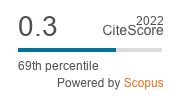Plio-pleistocene Hominids: Epistemological and Taxonomic Problems
Abstract
Within the historical times, which roughly corresponds with the Holocene epoch, the whole of mankind is believed to be a single species. Homo sapiens. But the human genealogical tree (phylogeny) is populated by a really astounding number of paleontological species and paleontological genera: Ardipithecus ramidus, Australopithecus anamensis, Australopithecus afarensis, Australopithecus africanus, Paranthropus robustus, Paranthropus
boisei, Homo habilis, Homo georgicus. Homo erectus, Homo ergaster, Homo antecessor, Homo heidelbergensis, Homo neanderthalensis, Homo sapiens. (cf. Gyula 2002). In fact there are many more (Sahelanthropus tchadensis,
Orrorin tugenensis, Kenyanthropus platyops, Australopithecus garhi, Australopithecus aethiopicus) but Foley (2002), quite reasonably, states that the evidence for their existence is, at present, insufficient. The existence of these multiple forms is beyond any doubt. The doubt, however arises concerning the human or „prehuman" status of them. Were they really true specific forms, half-way between the apes and Holocene man? Is it possible that they constitute a number of different ecotypes (or paleoraces) within the same natural species of Homo sapiens?
Keywords
Cite this article
Koszteyn, Jolanta. “Plio-Pleistocene Hominids: Epistemological and Taxonomic Problems.” Forum Philosophicum 9 (2004): 169–202. doi:10.35765/forphil.2004.0901.11.



